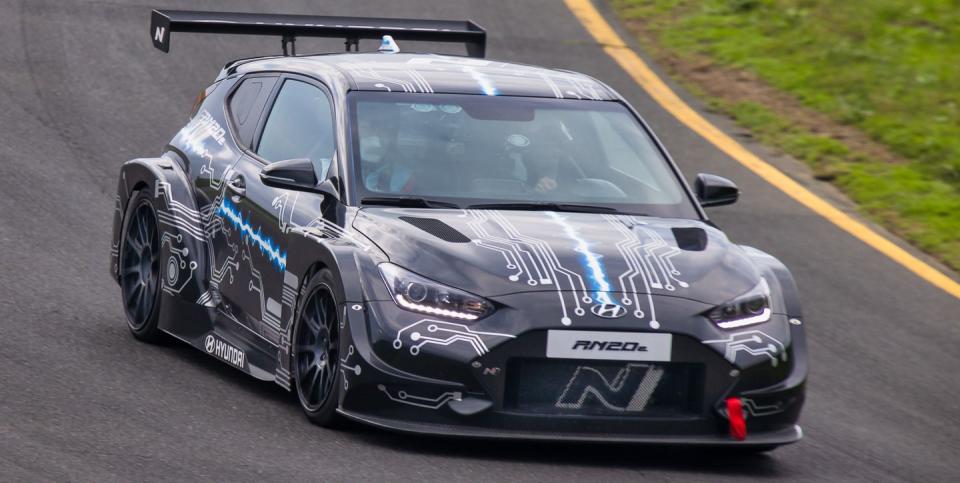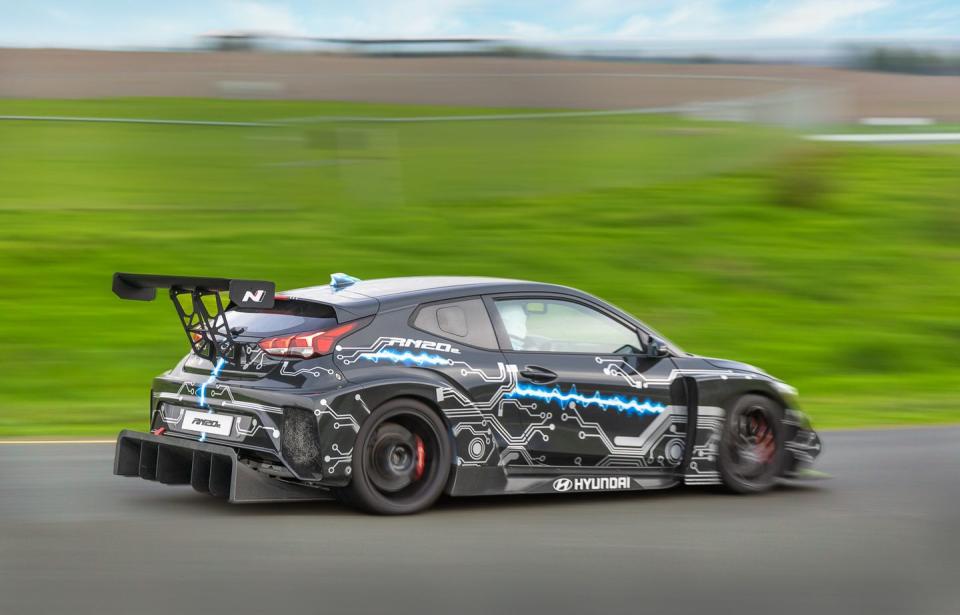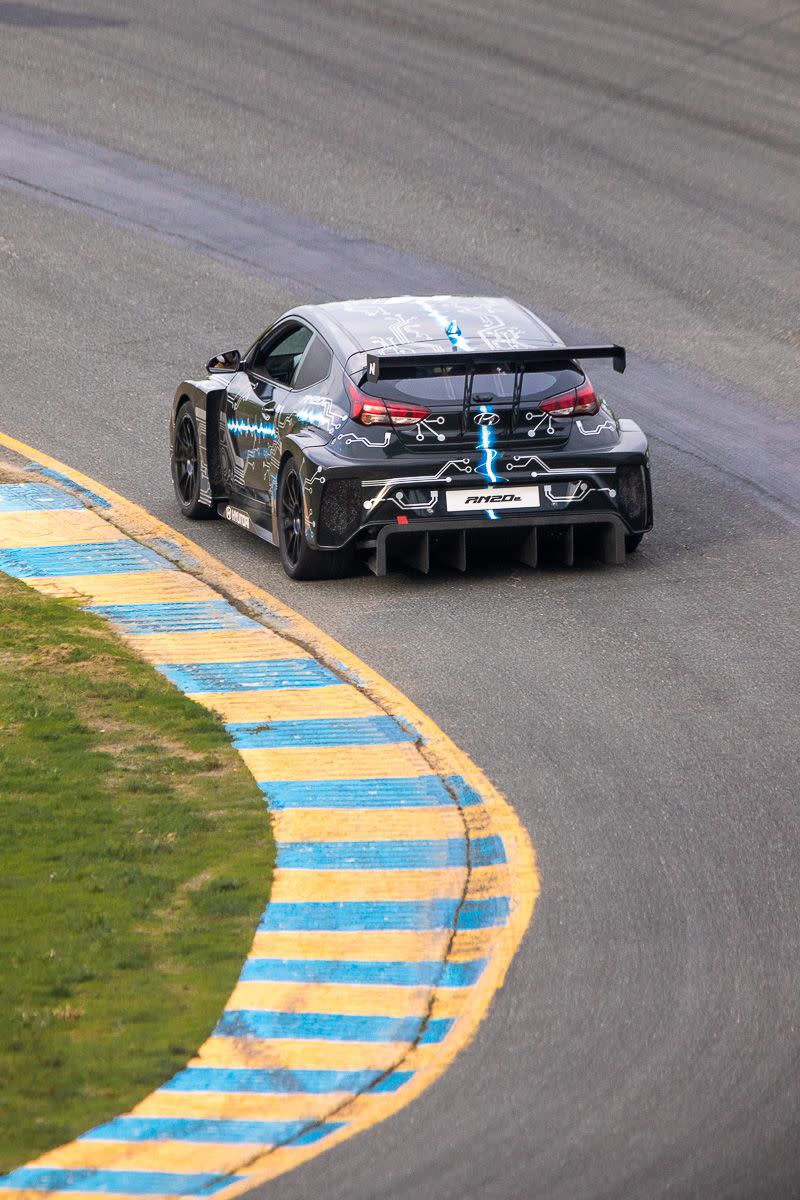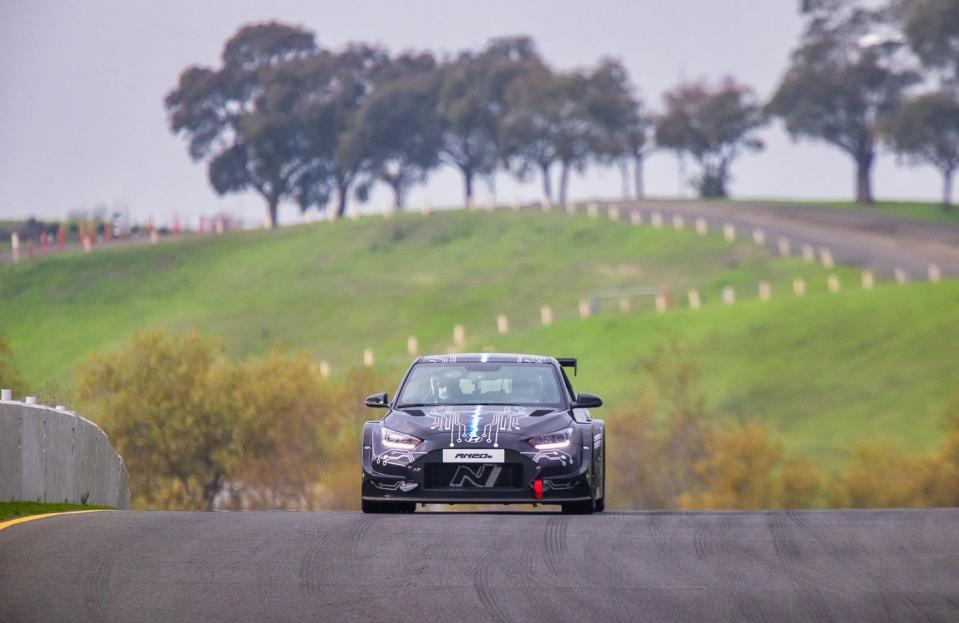Hyundai's Rear-Wheel Drive 810-HP Electric Hatchback Envisions the Future of Fast

Over the last few years, Hyundai has introduced concepts that look like a Veloster on the outside but are anything but Veloster underneath. Dubbed the Racing Midships (or RM studies), these designs are meant to represent the halo cars for Hyundai's N performance line. While the body shell is borrowed from a Veloster, every RM has had a mid-mounted engine and rear-wheel drive, the cars designed to act as test bed for future tech. The latest in this line, the RM20e, is the first electric model in the range. It's no slouch.
That's thanks to the Rimac battery packs, four inverters, and the electric motor that sends power to the rear wheels. With that tech in place, the RM20e is good for 810 hp and 708 lb-ft of torque in its top configuration. It's all very un-Veloster-like; Everything underneath the bodywork has been changed, the Veloster shell used solely for convenience and cost savings. As this isn't a production model, it makes more sense to spend the money on the suspension, powertrain, and tech than on a dedicated body or a production-ready interior.

My two laps at Sonoma Raceway were a brief taste of Hyundai's rolling test bed. Even if I was limited to 610 horsepower (I was a late addition to the roster and there wasn't enough juice in the battery to run a lap at full power), the RM20e was seriously quick.
The first thing that gets you is the startup sound, a space ship interpreting the language of a high-output engine digitally. Turns out, if you look closely, the RM20e still has an exhaust pipe nestled between the diffuser and the body work. There's no internal combustion engine anywhere to be found, but Hyundai left this to project the synthetic note from a speaker. Seems that if it's good enough to project the sound of cylinders, it's fine for pretend engine sounds too.
Once moving, you can't hear anything fake. The single-speed gearbox has straight cut gears, so the burble is replaced with an aggressive mechanical whine. This is the most aggressive sounding RC car in the world.
The whole package drives distinctly unlike any Veloster, because it's not really like any roadgoing Veloster. The electric motor is straight from the Veloster eTCR race car that runs in Europe, and it provides ample power, to a point. In the configuration that I drove the car, the acceleration was rapid up until about 100 mph but then trailed off noticeably, a combination of electric motors providing huge initial torque, the single gear, and the reduced power mode that I drove the car in impacting the top end.

Through corners, the front end feels light, as does the steering. And this isn't a light car, the electric powertrain pushing curb weight to about 4100 pounds. A majority of the weight, 60 percent, is over the rear axle, making for a stable rear end that acts as a pivot point for the car. But even with the weight there and the detuned spec that I drove the car in, if the tires aren't up to temp, the torque will make the rear end step out. A brief autocross run wasn't enough time to get used to the quick steering and immediate power delivery, there were a few sideways corner exits that sapped time. On track, though, once temp was in the tires, the RM20e was pointy and tricky but communicative. It wasn't going to bite if you paid attention and didn't try to trail it into a corner or do anything too drastic with the throttle.
Two laps of the track saw the battery lose nearly 20 percent of its charge, even in this detuned mode, so don't think that this is a solution that is production ready. It's more a rolling lab of suspension geometry and powertrain solutions to examine what is possible. It's also a place where Hyundai can use it's mobile charging station, which is a hydrogen fuel cell setup utilizing the powertrain of the company's Nexo crossover. It's not quiet, with fans that need to run to keep the powertrain cool at all times, but the only waste is water and the charge speeds are quick.

This first electric RM model tries to envision a future where we don't need any gas to drive or charge. If Hyundai is able to bring a little of this race car spirit to future electric N products, we're going to have a lot to be excited about.
You Might Also Like

 Yahoo Autos
Yahoo Autos 